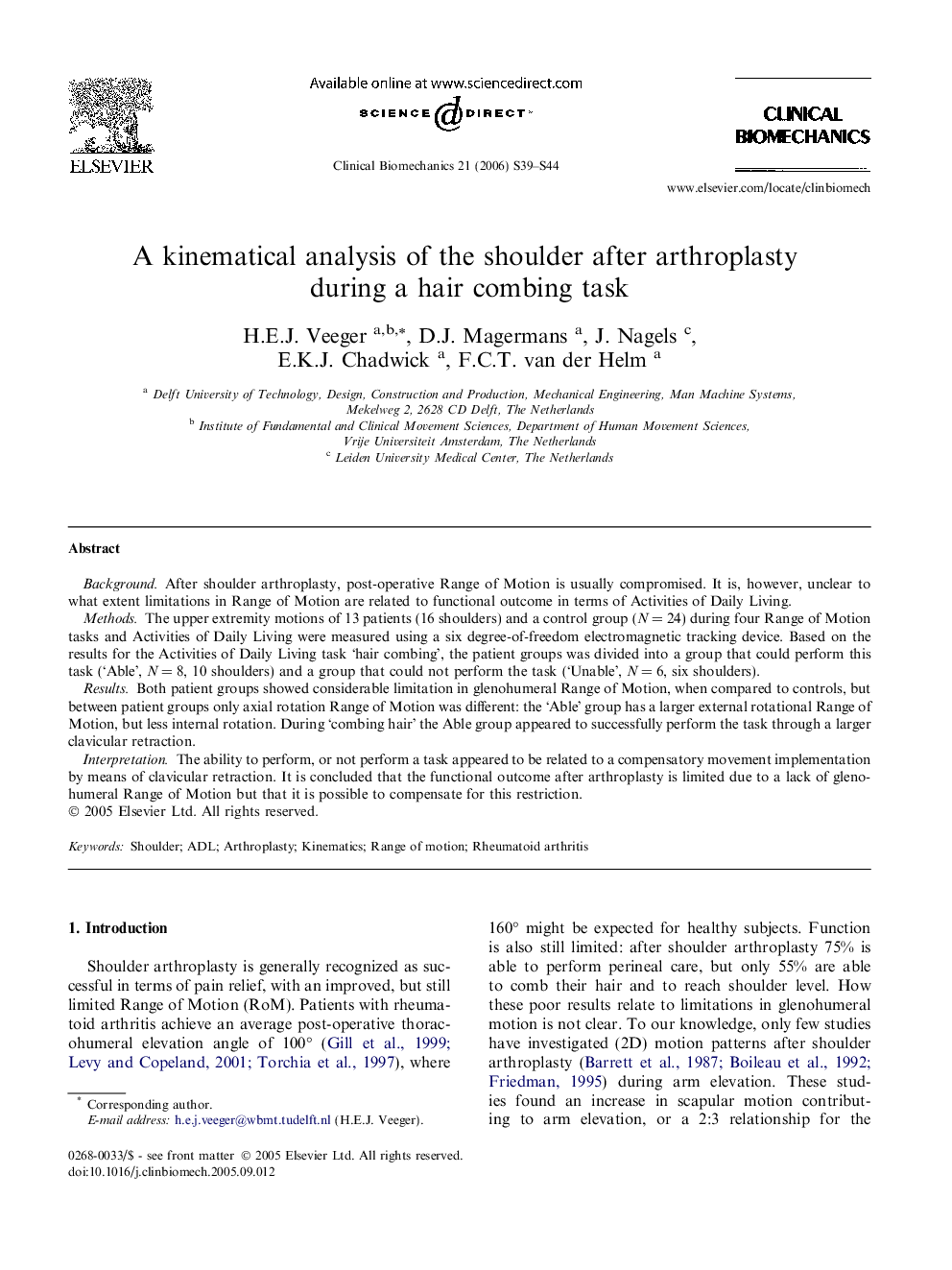| Article ID | Journal | Published Year | Pages | File Type |
|---|---|---|---|---|
| 4051620 | Clinical Biomechanics | 2006 | 6 Pages |
BackgroundAfter shoulder arthroplasty, post-operative Range of Motion is usually compromised. It is, however, unclear to what extent limitations in Range of Motion are related to functional outcome in terms of Activities of Daily Living.MethodsThe upper extremity motions of 13 patients (16 shoulders) and a control group (N = 24) during four Range of Motion tasks and Activities of Daily Living were measured using a six degree-of-freedom electromagnetic tracking device. Based on the results for the Activities of Daily Living task ‘hair combing’, the patient groups was divided into a group that could perform this task (‘Able’, N = 8, 10 shoulders) and a group that could not perform the task (‘Unable’, N = 6, six shoulders).ResultsBoth patient groups showed considerable limitation in glenohumeral Range of Motion, when compared to controls, but between patient groups only axial rotation Range of Motion was different: the ‘Able’ group has a larger external rotational Range of Motion, but less internal rotation. During ‘combing hair’ the Able group appeared to successfully perform the task through a larger clavicular retraction.InterpretationThe ability to perform, or not perform a task appeared to be related to a compensatory movement implementation by means of clavicular retraction. It is concluded that the functional outcome after arthroplasty is limited due to a lack of glenohumeral Range of Motion but that it is possible to compensate for this restriction.
